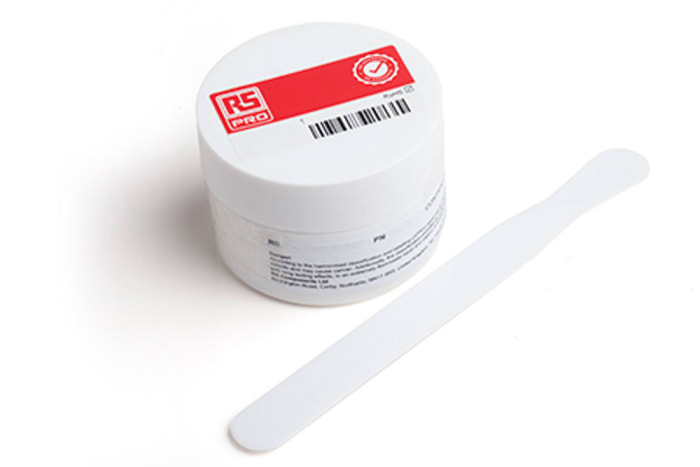PCM interface material paste, 100g tube

Техническая документация
Характеристики
Brand
RS ProТеплопроводность
3.4Вт/м·К
Максимальная рабочая температура
+125°C
Минимальная рабочая температура
-30°C
Диапазон рабочих температур
-30 → +125 °C
Страна происхождения
Taiwan, Province Of China
Информация о товаре
RS PRO Phase Change Interface Material
RS PRO phase change materials are ideal for thermal management applications. Available in this range are phase change interface materials in sheets, resistor pads and as a dispensable paste.
Phase change materials work because they change their state with changes in temperature between the heat source and the heatsink. During this process, the material stores thermal energy which is then released as the material cools. This means that the material can absorb thermal energy as the heat is generated which helps to keep the desired component cool. This improves contact between the surfaces, completely fillling air gaps and increasing heat transfer.

Информация о наличии не успела загрузиться
P.O.A.
1
P.O.A.
Информация о наличии не успела загрузиться
1

Техническая документация
Характеристики
Brand
RS ProТеплопроводность
3.4Вт/м·К
Максимальная рабочая температура
+125°C
Минимальная рабочая температура
-30°C
Диапазон рабочих температур
-30 → +125 °C
Страна происхождения
Taiwan, Province Of China
Информация о товаре
RS PRO Phase Change Interface Material
RS PRO phase change materials are ideal for thermal management applications. Available in this range are phase change interface materials in sheets, resistor pads and as a dispensable paste.
Phase change materials work because they change their state with changes in temperature between the heat source and the heatsink. During this process, the material stores thermal energy which is then released as the material cools. This means that the material can absorb thermal energy as the heat is generated which helps to keep the desired component cool. This improves contact between the surfaces, completely fillling air gaps and increasing heat transfer.
